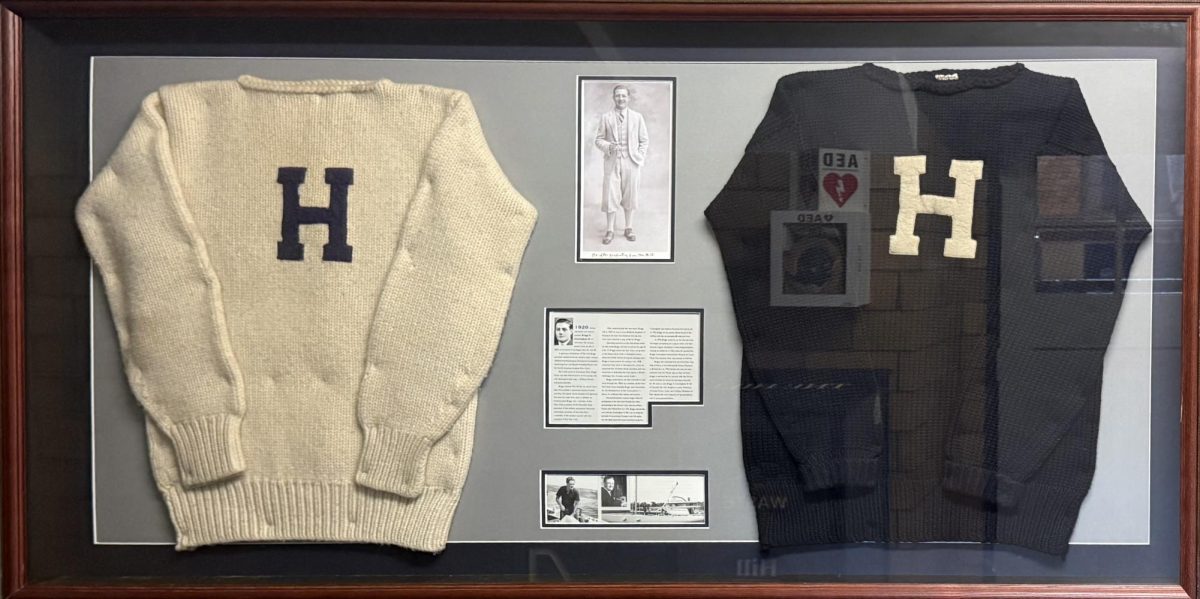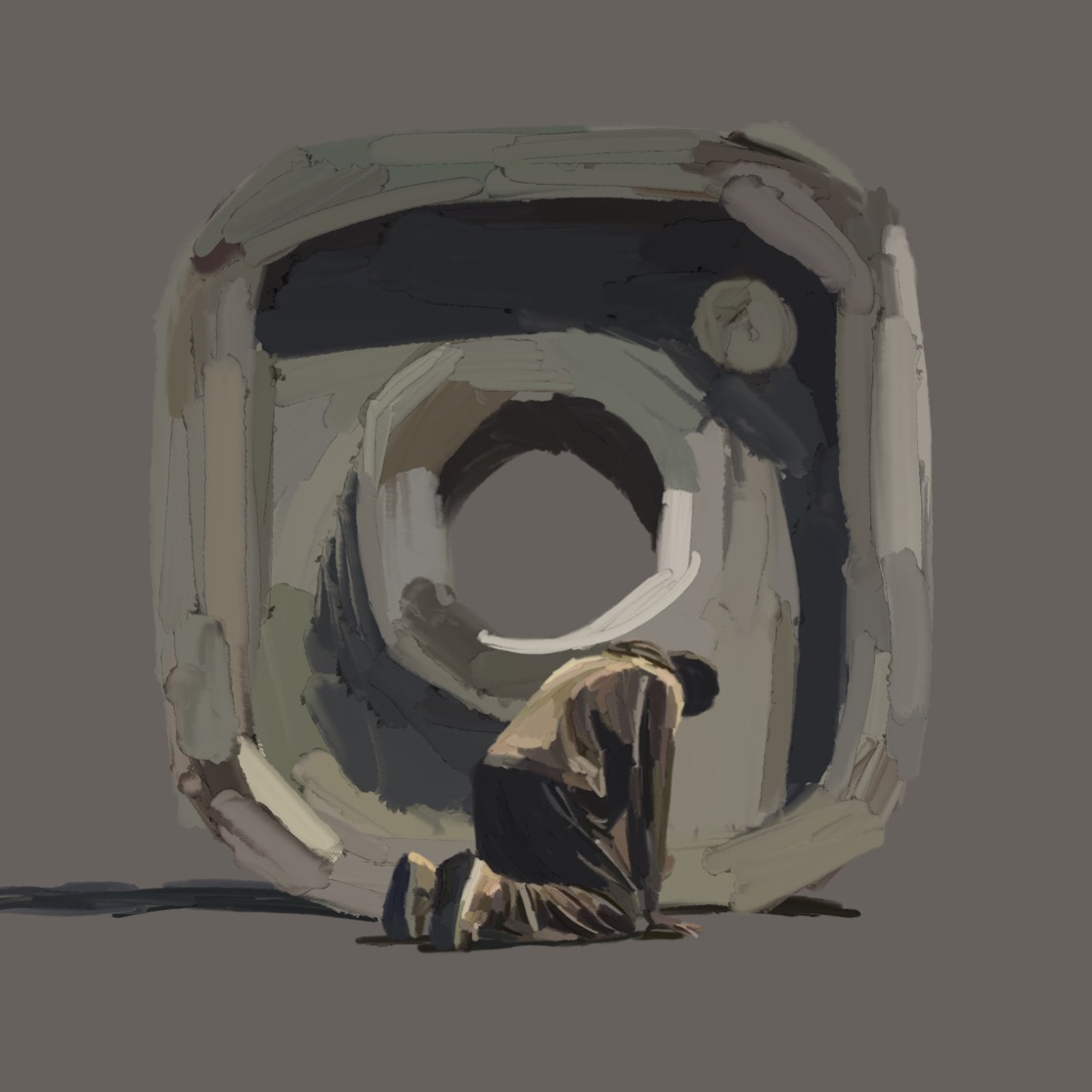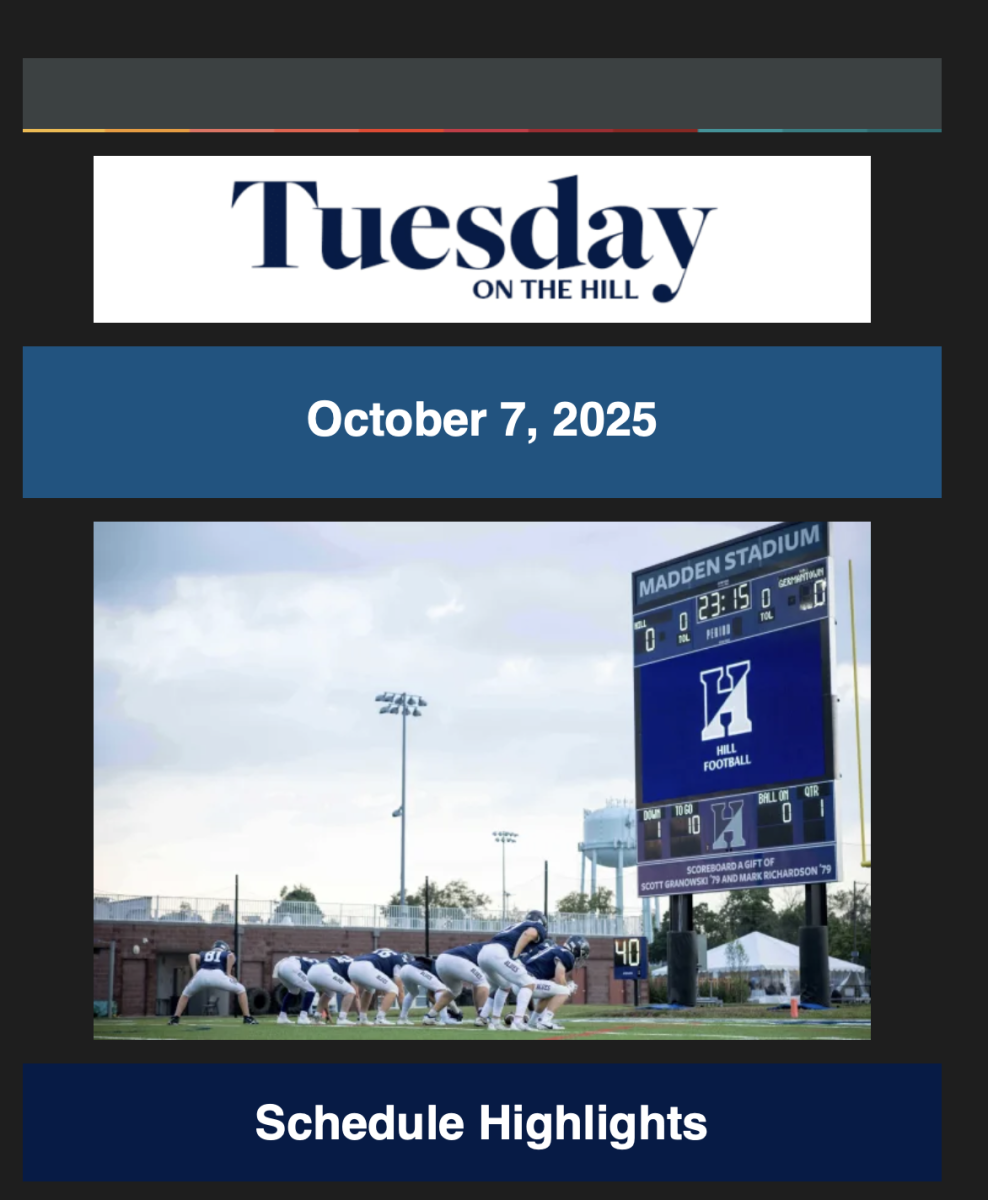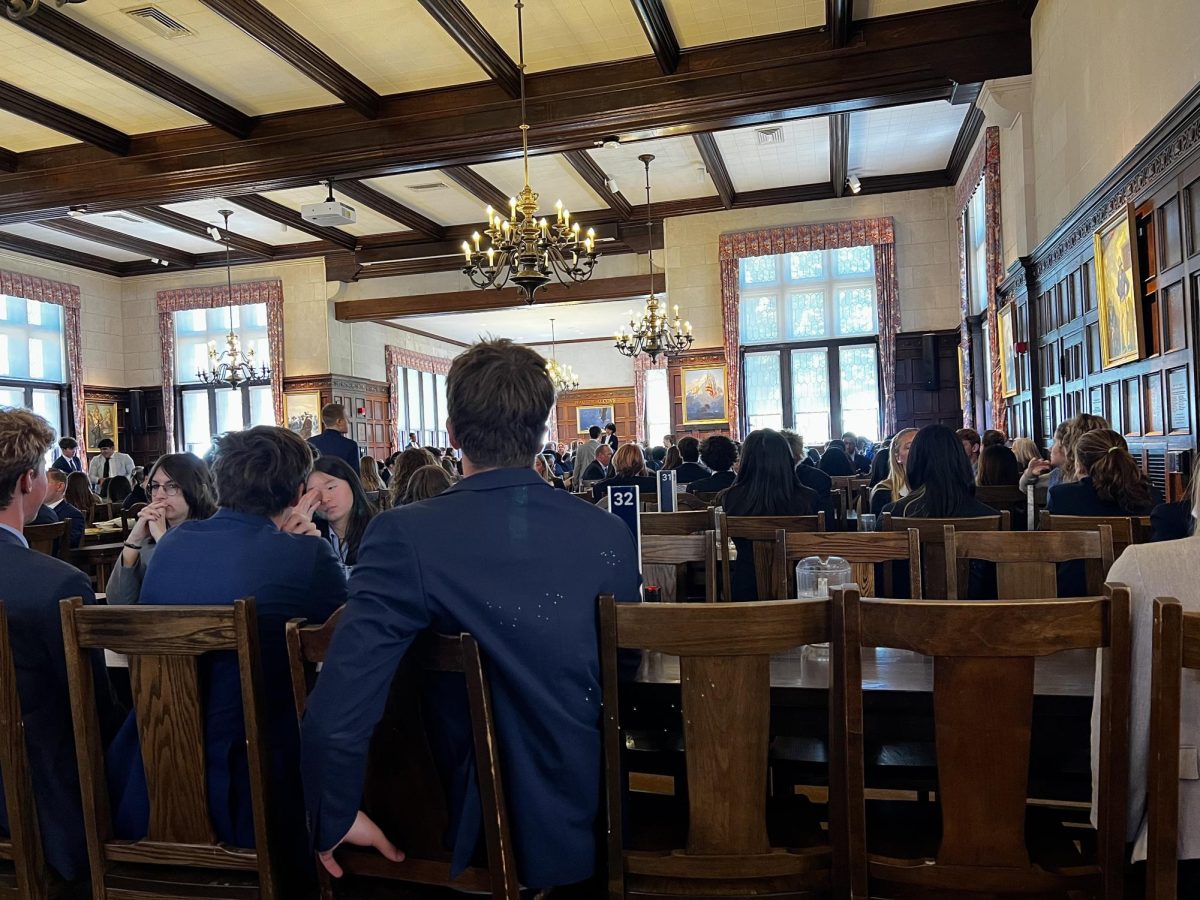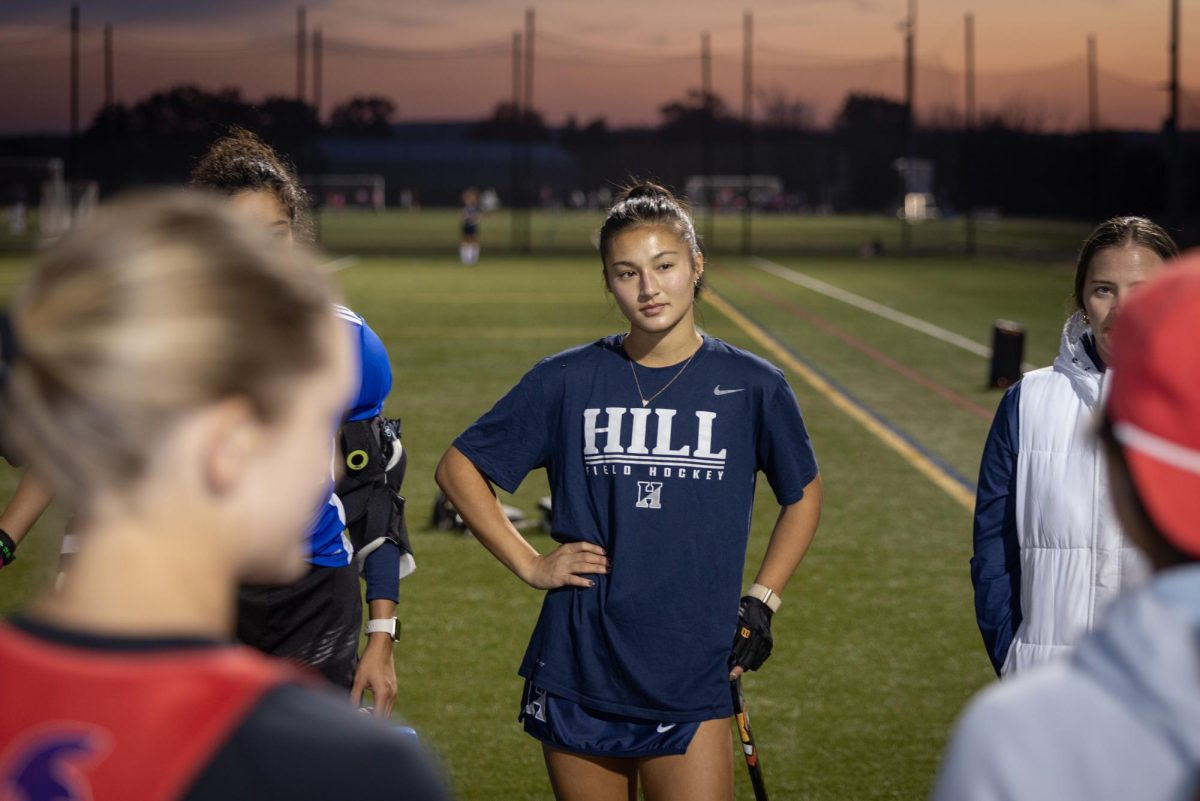As the new lunch seating chart comes out, students rush to see who will sit at their tables. For varsity students, their table is likely no different same, but for everyone else, their tables may make or break their day.
Hill News among many other afternoon activities are denied a designated seated lunch table. However, varsity teams are assured of a table. I refuse to believe that this policy is fair or for the betterment of non-varsity activities. Designated dining hall tables should not be a privilege for a selected few, but rather, it should be open to any group that requests one.
Heidi Eccleston, associate dean of students, outlined in an email Hill’s current seated lunch policy. “Students are assigned a designated lunch table at the start of each term and midterm, occurring six times a year,” Eccleston stated. Eccleston continues explaining that “varsity teams in season are assigned a team table to foster team building.”
Vicki Fries, senior administrative assistant of the deans’ office further clarified that the afternoon activities given designated tables also include the “theater, debate and community service” programs.
For the thirds teams, junior varsity teams and other non-interscholastic activities, Eccleston explains, “are randomly and thoughtfully assigned a table based on their form.”
While I understand that this policy intends to foster meaningful relationships, I think it unfairly denies certain activities designated seated lunch tables. However, the policy raises the question: Are students in non-varsity activities not deserving of strong relationships with the people they spend five afternoons with every week?
I believe team bonding is important for all afternoon activities. From the perspective of a student who participated in The Hill News afternoon activity for two terms, sitting together at a seated lunch table each day would provide time for planning and brainstorming, while at the same time, allowing students to get to know the people they spend hours a week together with.
Seated lunch puts students in a unique setting that no other time or place can recreate, it would, as Anneliese Mortenson ’28 thinks, “enhance your game performance or how you perform on the stage just by connecting with everyone in your group.” Furthermore, this environment would strengthen the relationships between students whose afternoon activities lack opportunities to collaborate and interact. Many other students also share similar views.
“I do not see the purpose of randomly seating students not in a varsity athletic team. If the goal of randomly assigned seating is to get to know new people, why are varsity athletes excluded from that? It just seems like it encourages creating niches for the varsity sports, which is not necessarily bad, but why can’t art or other niches get that opportunity as well?” Helen Zhang ’25, a two-year participant of the non-interscholastic dance activity, said.
Ling Yuan ’27 offers up a modification to the current seated lunch table policy, which serves to include all afternoon activities.
“I think activities that revolve around collaboration should get a table because the reason why you have people at the same table anyway is for bonding. And the reason you want bonding is because they are going to be working together for most of their time in the co-curricular. So, this should apply to all cases where people are collaborating. Whether you are working on the theater production; you are writing a paper, or volunteering with each other,” Ling Yuan ’27 expresses.
Fife Akinyanmi ’25 describes his outlook on the varsity designated lunch tables and the changing culture at Hill.
“It is just preferential treatment. I think that the school is beginning to focus more on sports and so giving preferential treatment to their varsity sport teams is not necessarily a bad thing. But I do not see any good reason why they should not also give junior varsity teams their own tables.”
Similarly, Ling Yuan ’27 believes that the school assigning the privilege of seated lunch tables mainly to varsity teams is demonstrative of biased treatment against non-varsity students.
“If you are a varsity team, you deserve better equipment, and you deserve to have more space to practice. Because you are, to put it bluntly, more important to the school, more valuable to the school. But then, lunch tables are not a valuable resource, so, in this sense, there is no justified reason that they should be applying this ‘elitism’ in the context of assigning dining hall tables.”
Shriya Motupalli ’27 has experience from being at a randomized table and designated table as a participant of recreational squash and varsity squash. She describes her viewpoint on randomization.
“I do not like the randomized tables. I understand that they are trying to build friendships, but I spend most of my [lunches], just sitting in silence, if I do not already know the people. Which I feel like is pretty useless, and I feel if I was able to sit with my team and go to practice with them, that would probably build a much greater bond and better sportsmanship.”
I find that table randomization, as a whole, does not build relationships; it builds acquaintances. If I sit with a peer during lunch for half of a term, I may give them a quick smile from down the hall. This, though, is not a friendship. Being constantly randomized with a new set of people prevents making relationships with people from my afternoon activity.
Correspondingly, Yuan ’27 explains, “I think that this ties into an overall problem…with the school thinking that if they just throw people at each other, they will magically become friends, which is not how friends work,” he continues, “I have experience with being on a team table and being at a random table. I only see those people for 30 minutes every day. I never talk to them outside of that. I never see them outside of that, and so, I don’t know these people.”
Eccleston further explains the policy: “Tables are reserved for varsity athletes/theatre students who meet on Saturdays.”
I understand the line of reasoning for giving activities with six days of commitment at a designated table. Although afternoon arts and community service both receive designated tables, they do not meet on Saturdays.
I agree with Motupalli ’27, as she states, “If you are going to give an individual activity a table, you might as well give the other individualized activities a table [too].”
The school implemented this policy and rejects other activities based upon this policy. However, they continue to contradict their own rules. Rather than being hypocritical, the school should improve their consistency and change their policy to provide a designated table for any activity that requests one.
Other students also recognize that the school’s table selection can at times be contradictory to the rules and objectives of the policy.
Yuan ’27 says, “I think another problem is that the school is very inconsistent with their selection.”
Through a different perspective, Matthew Gettings, who is the junior varsity boys soccer head coach, comments on a similar worry of the policy’s consistency.
“If you’re going to open the door for afternoon arts, you should be open for any group who is interested in at least being considered.”
Gettings expands on his thoughts on the seated lunch table policy and situation.
“I love the concept of every six weeks or so [that] you are with a new group of people, and especially when you are new to Hill, third and fourth form in particular. It is a way to meet students, and at as a faculty member who does not coach varsity, every [six] weeks. I get a new group of kids that I get to know, in a lot of times it would be kids I would never get to know otherwise.”
Gettings adds his thoughts on varsity teams receiving dining hall designated lunch tables.
“I’m not sure if it’s healthy for kids who are with their varsity teammates so much of the of the day and the term to also have to sit with them at meals,” he continues, “I just think it’s a lot of time together in one group, again, segregating from the from the regular community.”
While Gettings enjoys certain aspects of the current policy, he expresses interest in other combined solutions; one which entails the first half of the midterm with afternoon activities tables and the second half with randomized tables.
“Bonding for the first half of the term, and then just randomize the whole school,” he elaborates, “it would force people to get out of their comfort zone and meet new people but also still give an opportunity for teams to bond.”
While there are many different compromises that can be made, Liyan Sun ’25 speaks for the other students as she says, “I believe that all afternoon activities, teams, and groups should have a table whether they are a [non-interscholastic] group, JV team, or varsity team.”
As the students have shown, the school’s inconsistency in their policy is no longer acceptable to the student body. Many students and teachers offer up new ideas, but the question that remains now is whether Hill will listen to the proposals and change the current policy or if it will ignore the opposing opinions.


